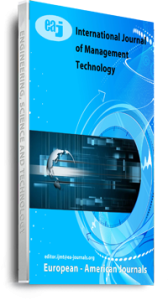In the realm of financial institutions, assessing credit risk accurately is paramount for maintaining stability and profitability. Traditional methods of credit risk assessment, while effective to some extent, often fall short in capturing the complexities of modern financial markets. This review explores the economic and financial implications of leveraging machine learning algorithms for credit risk assessment. Machine learning, a subset of artificial intelligence, offers a promising alternative to traditional credit risk assessment methods. By analyzing vast amounts of data, machine learning algorithms can identify patterns, trends, and correlations that may not be evident through conventional approaches. The introduction outlines the landscape of credit risk assessment in financial institutions, highlighting the challenges faced by traditional methods and introducing machine learning as a potential solution. The review statement asserts that understanding the economic and financial implications of machine learning in credit risk assessment is essential for stakeholders in the financial industry. This provides an overview of traditional credit risk assessment methods, such as credit scoring models and statistical techniques, emphasizing their limitations and shortcomings. It transitions into an exploration of machine learning in credit risk assessment, defining machine learning, discussing its relevance to credit risk assessment, and outlining the types of algorithms commonly used in this context. The economic implications of adopting machine learning in credit risk assessment are analyzed next. Improved accuracy and predictive power, cost savings, and enhanced risk management are identified as key benefits. These economic advantages are further examined in the context of financial analysis, comparing the performance metrics of traditional and machine learning-based credit risk assessment models. Case studies and empirical evidence are presented to illustrate the effectiveness of machine learning algorithms in credit risk assessment. Real-world examples demonstrate how machine learning can outperform traditional methods in terms of accuracy and efficiency. Challenges and risks associated with the adoption of machine learning in credit risk assessment are also discussed, including data privacy concerns, model interpretability issues, and regulatory compliance requirements. Finally, this concludes by highlighting future directions and recommendations for stakeholders in the financial industry. Emerging trends, policy recommendations, and areas for future research and innovation are identified as crucial aspects for consideration. This provides an overview of the economic and financial analysis of machine learning algorithms for credit risk assessment. It emphasizes the potential of machine learning to revolutionize credit risk assessment practices in financial institutions, while also acknowledging the challenges and risks that must be addressed for successful implementation.
Keywords: Algorithms, Credit risk, Financial Analysis, machine learning

